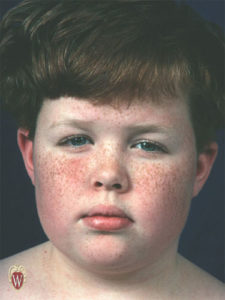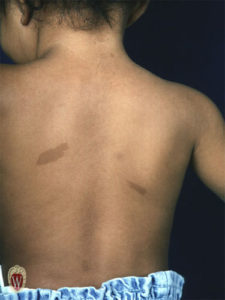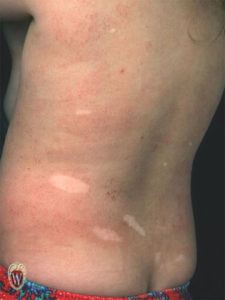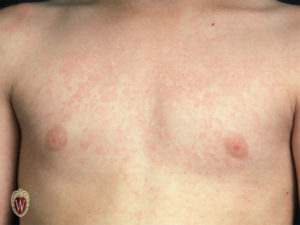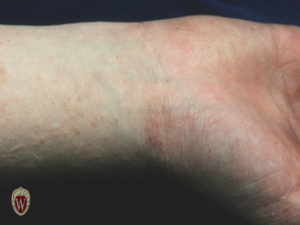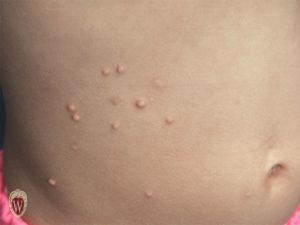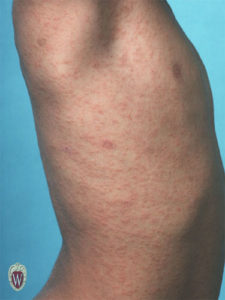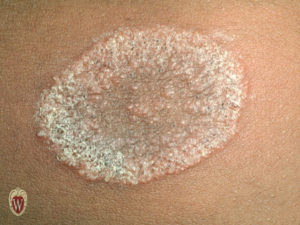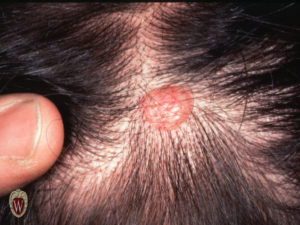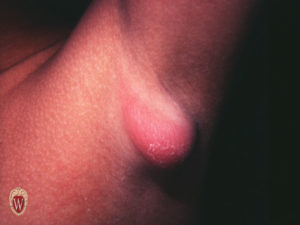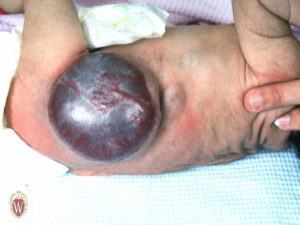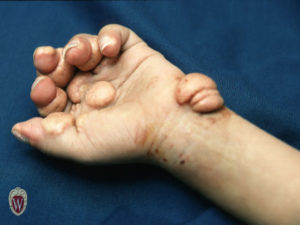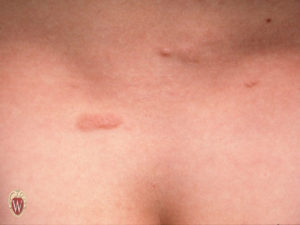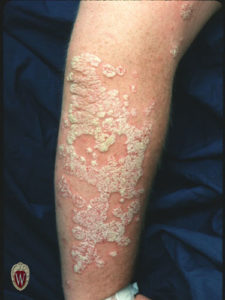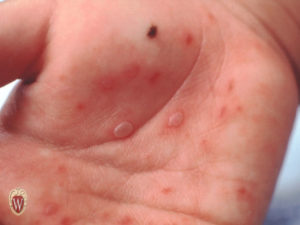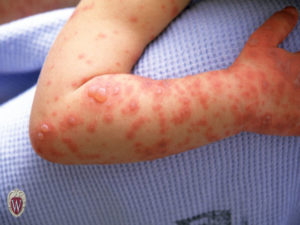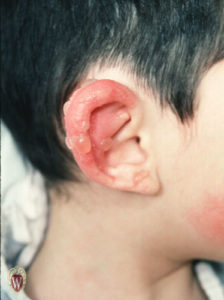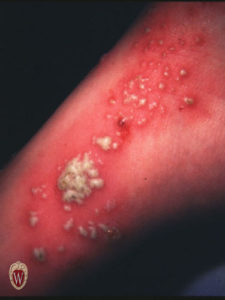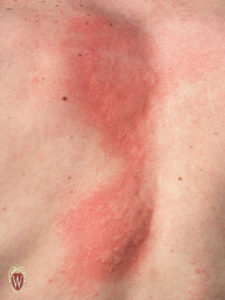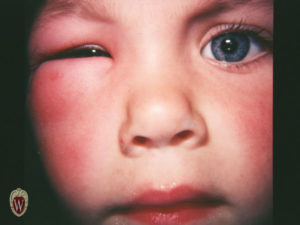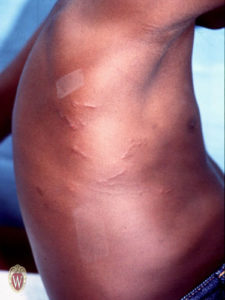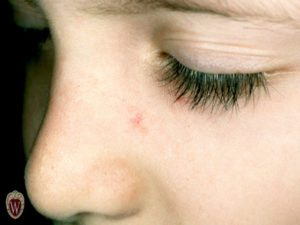Primary lesions are physical changes in the skin considered to be caused directly by the disease process. Types of primary lesions are rarely specific to a single disease entity.
Click any of the images below to view them in a higher resolution.
This is an accordion element with a series of buttons that open and close related content panels.
Macule
A macule is a change in the color of the skin. It is flat, if you were to close your eyes and run your fingers over the surface of a purely macular lesion, you could not detect it. A macule greater than 1 cm. may be referred to as a patch.
|
|
|
Papule
A papule is a solid raised lesion that has distinct borders and is less than 1 cm in diameter. Papules may have a variety of shapes in profile (domed, flat-topped, umbilicated) and may be associated with secondary features such as crusts or scales.
|
|
|
Nodule
Tumor
A tumor is a solid mass of the skin or subcutaneous tissue; it is larger than a nodule. (Please bear in mind this definition does not at all mean that the lesion is a neoplasm.)
Plaque
A plaque is a solid, raised, flat-topped lesion greater than 1 cm. in diameter. It is analogous to the geological formation, the plateau.
